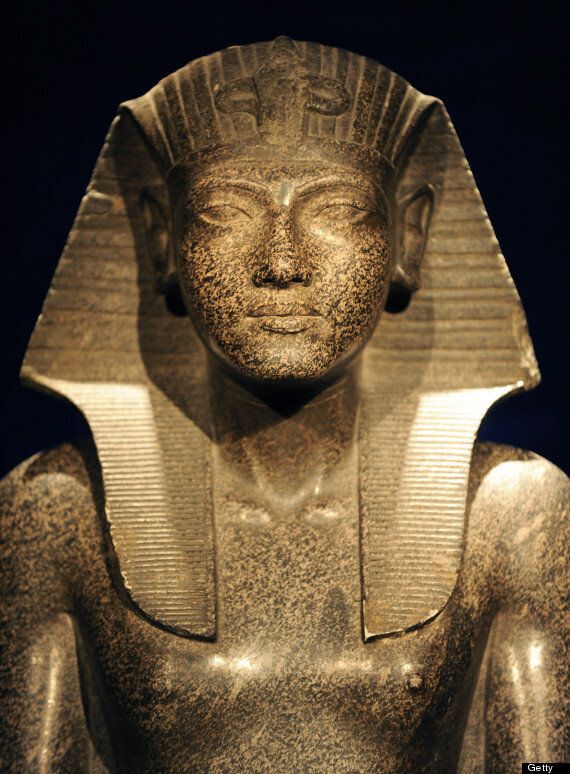Theories of what caused the early death of Egypt’s most famous pharaoh, King Tutankhamun, have swirled for years.
Some claim his death at the age of 19 was caused by complications from a broken leg exacerbated by malaria.
Others say his parents were brother and sister, explaining the boy king’s cleft palate and club foot, and some even suggest he was murdered.

Tutankhamun had unusually large breasts and wide hips
But a surgeon at London’s Imperial College says Tutankhamun’s unusually large breasts and wide hips – characteristics shared by his father and uncle – suggest he may have suffered from inherited temporal lobe epilepsy.
Hutan Ashrafian also believes his theory explains why the king and several of his relatives were documented as having experienced religious visions.
The Washington Post explains: “People with a form of epilepsy in which seizures begin in the brain’s temporal lobe are known to experience hallucinations and religious visions, particularly after exposure to sunlight.”
The report adds the temporal lobe is connected to the parts of the brain which release hormones and that epileptic seizures are known to alter the levels of hormones involved in sexual development - which may explain Tutankhamun's somewhat feminine figure.
Indeed if the king’s death was caused by his condition, it could also have been the trigger for the world’s earliest monotheistic religion.
Tutankhamun’s father, Akhenaten, had a series of religious conversions which saw him force the country to worship the sun god Aten, instead of multiple deities, the BBC says.
Howard Markel, a medical historian at the University of Michigan in Ann Arbor, concedes Ashrafian's theory is "fascinating and plausible".
He added: "Do we know that a seizure led to monotheism? It's a nice idea, but we don't know."
Tutankhamun became king at the age of 10 in 1333BC and ruled just for nine years.
In 2010, DNA results showed the boy king had malaria and a bone disorder, a factor that may have been the result of inbreeding, National Geographic claims.
Following the findings, which were published in the Journal of the American Medical Association, some researchers concluded that Tutankhamun died from a combination of a malaria infection and a fractured thigh bone.
According to Discovery News, however, German researchers later disputed the conclusions, instead suggesting that abnormalities in Tutankhamun's foot were indicative of sickle-cell disease.
In 2005, researchers ruled out the murder theory after conducting CAT scans. They concluded that a bone fragment found in his skull was from the mummification process rather than a blow to the head.